简介
XStream是Java类库,提供了所有的基础类型、数组、集合等类型直接转换的支持,用来将对象序列化成XML或反序列化为对象。
基本使用
XStream反序列化分析采用依赖版本如下:
1 | <dependency> |
定义接口类IndexInterface如下:
1 | package org.example.deserialize.xstream; |
定义类Index实现IndexInterface接口如下:
1 | package org.example.deserialize.xstream; |
定义类IndexXML实现XStream序列化与反序列化如下:
1 | package org.example.deserialize.xstream; |

前置知识
Converter
Converter的职责是提供一种策略,用于在对象图中找到的特定类型的对象与XML之间的转换,XStream为Java的常见类型(原始类型、字符串、文件、集合、数组和日期等)提供了Converter转换器。简而言之,就是输入XML后它能识别其中的标签字段并转换为相应的对象,反之亦然。
转换器需要实现的三个方法:
- canConvert方法:告诉XStream对象,它能够转换的对象
- marshal方法:将对象转换为XML时候的具体操作
- unmarshal方法:将XML转换为对象时的具体操作
MapConverter
MapConverter是针对Map类型还原的Converter,跟进com.thoughtworks.xstream.converters.collections#unmarshal方法,依次调用unmarshal方法、populateMap方法和putCurrentEntryIntoMap方法,在putCurrentEntryIntoMap方法中会调用Map#put方法,后续就是对key调用hashCode函数。
1 | protected void populateMap(HierarchicalStreamReader reader, UnmarshallingContext context, Map map) { |
TreeSetConverter&TreeMapConverter
TreeSetConverter的反序列化处理方式为先转化为TreeMapConverter的方式,优先还原TreeSet里的TreeMap,再填充到TreeSet中。
从TreeSetConverter的调用来看看整个的调用过程,先从TreeSet中提取出TreeMap,接着调用TreeMapConverter来还原TreeMap。在TreeMapConverter中利用sortedMap来填充需要还原的Entry,这里会回到上文提到的MapConverter类中的populateMap和putCurrentEntryIntoMap方法,最后调用TreeMap#putAll方法,调用到java.util.AbstractMap#putAll方法。�
�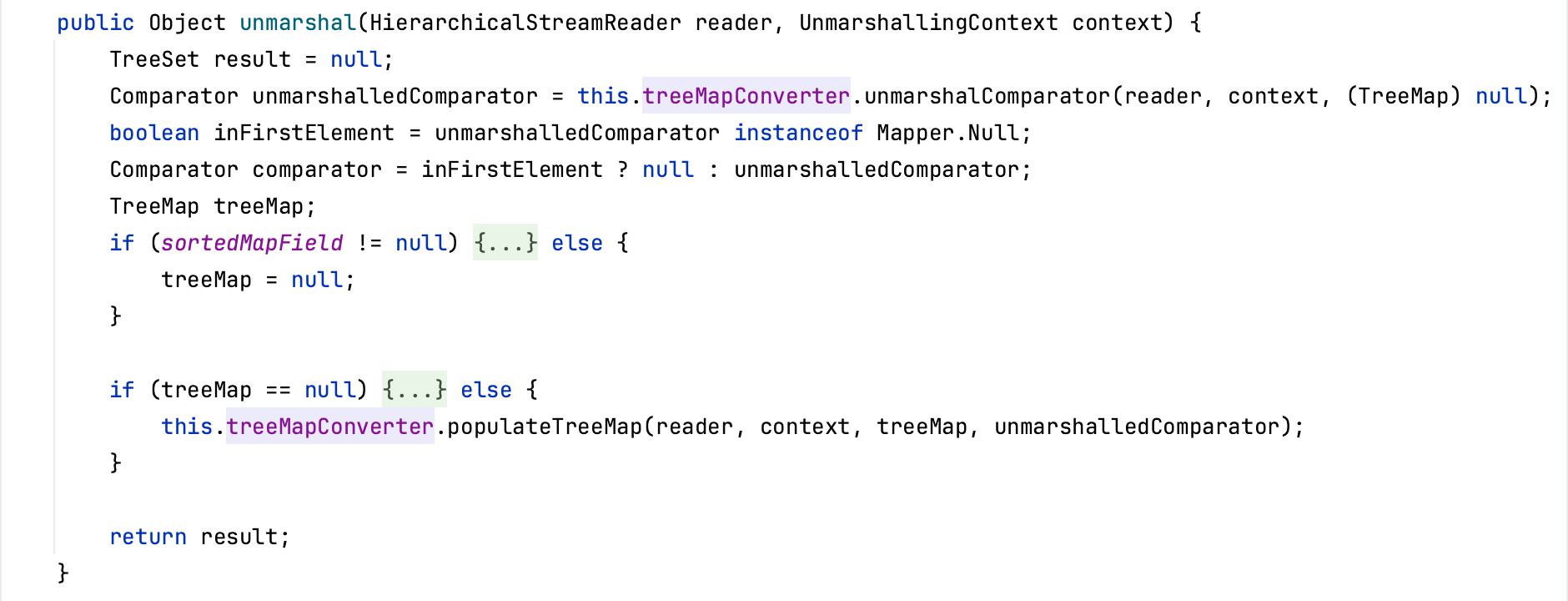

DynamicProxyConverter
� DynamicProxyConverter,即动态代理转换器,支持对动态代理的方式进行还原,使得XStream能够把XML内容反序列化转换为动态代理类对象,使用Proxy动态代理,可以扩展前面两种Converter自动调用函数的攻击面。
EventHandler
EventHandler类是一个实现了InvocationHandler的类,EventHandler类定义的代码如下:其含有target和action属性,函数调用链为EventHandler.invoke->EventHandler.invokeInternal->MethodUtil.invoke。
在invokeInternal方法中,首先会判断调用的函数名是否为hashCode、equals和toString,由于需要利用到后续部分的MethodUtil#invoke方法,因此上文提到的Map相关的Converter无法利用,但是可以利用TreeSet去触发compareTo函数。
后面就是利用Java反射机制来实现函数调用,并且变量target和action都是可控的,对于参数action需要满足:
- 无参数类型函数(ProcessBuilder#start、JdbcRowSetImpl#getDatabaseMetaData等)
- 单个参数类型函数,且参数类型为Comparable,并且这个函数是可利用的

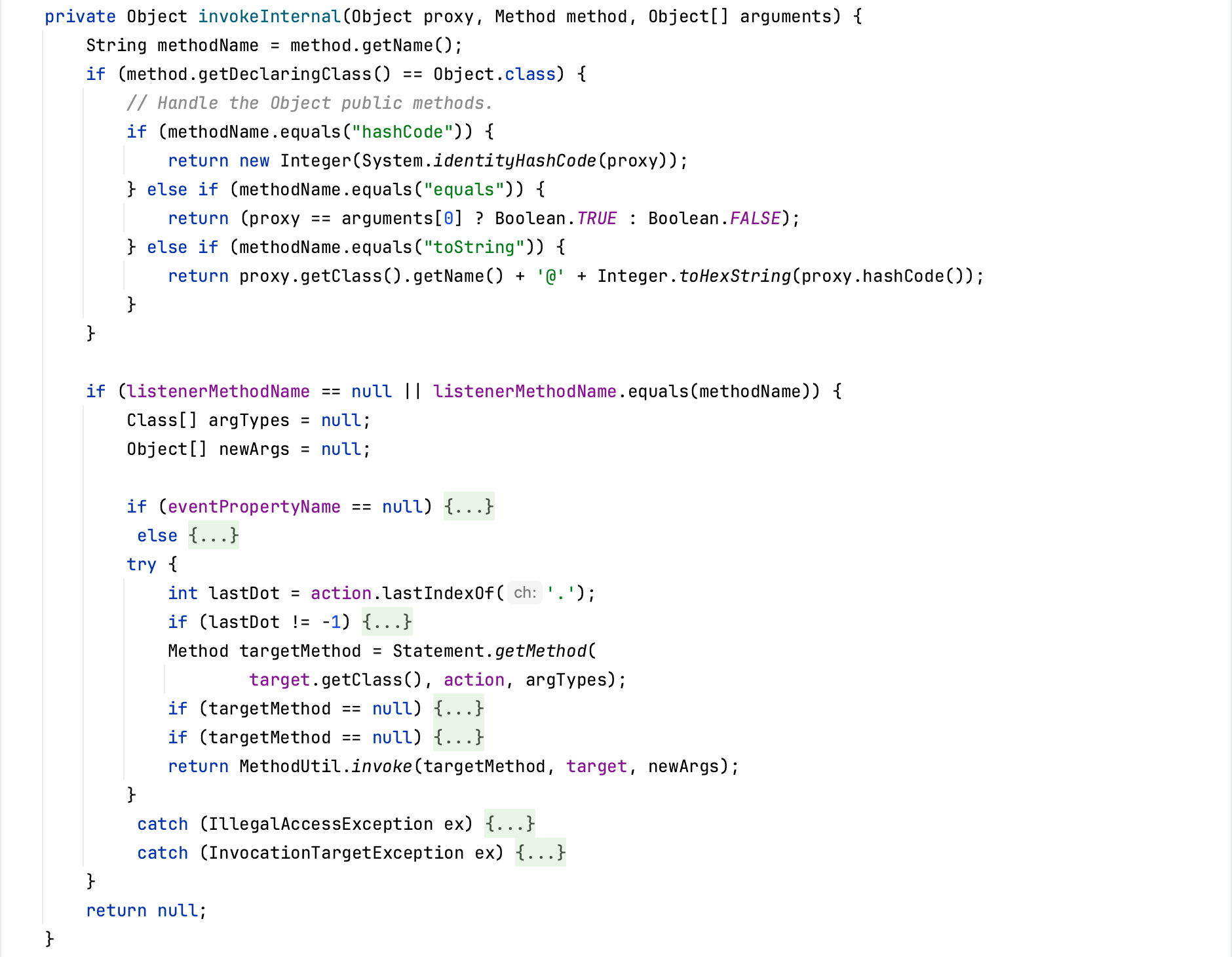
漏洞分析
1 | <sorted-set> |
1 | package org.example.deserialize.xstream; |
在xStream.fromXML处下断点,同时在EventHandler#invoke方法和EventHandler#invokeInternal方法上也添加断点。
在多次调用unmarshal方法后,进入com.thoughtworks.xstream.core.AbstractTreeMarshallingStrategy#unmarshal方法,调用TreeUnmarshaller#start方法解析XML内容。

跟进TreeUnmarshaller#start方法,调用HierarchicalStreams#readClassType方法来获取XML中根标签的类型。

接着调用TreeUnmarshaller#convertAnother方法对java.util.SortedSet类型进行转换,跟进TreeUnmarshaller#convertAnother方法,调用com.thoughtworks.xstream.mapper.AnnotationMapper#defaultImplementationOf方法来寻找java.util.SortedSet类型的默认实现类型进行替换,替换为java.util.TreeSet类型。


接着调用com.thoughtworks.xstream.core.DefaultConverterLookup#lookupConverterForType方法来寻找TreeSet对应类型的转换器。跟进DefaultConverterLookup#lookupConverterForType方法方法,通过调用Converter#canConvert方法来判断该转换器是否能够转换出TreeSet类型,这里找到满足条件的TreeSetConverter转换器,接着调用typeToConverterMap#put方法将类型和转换器的对应关系放入Map表中,再返回转换器。
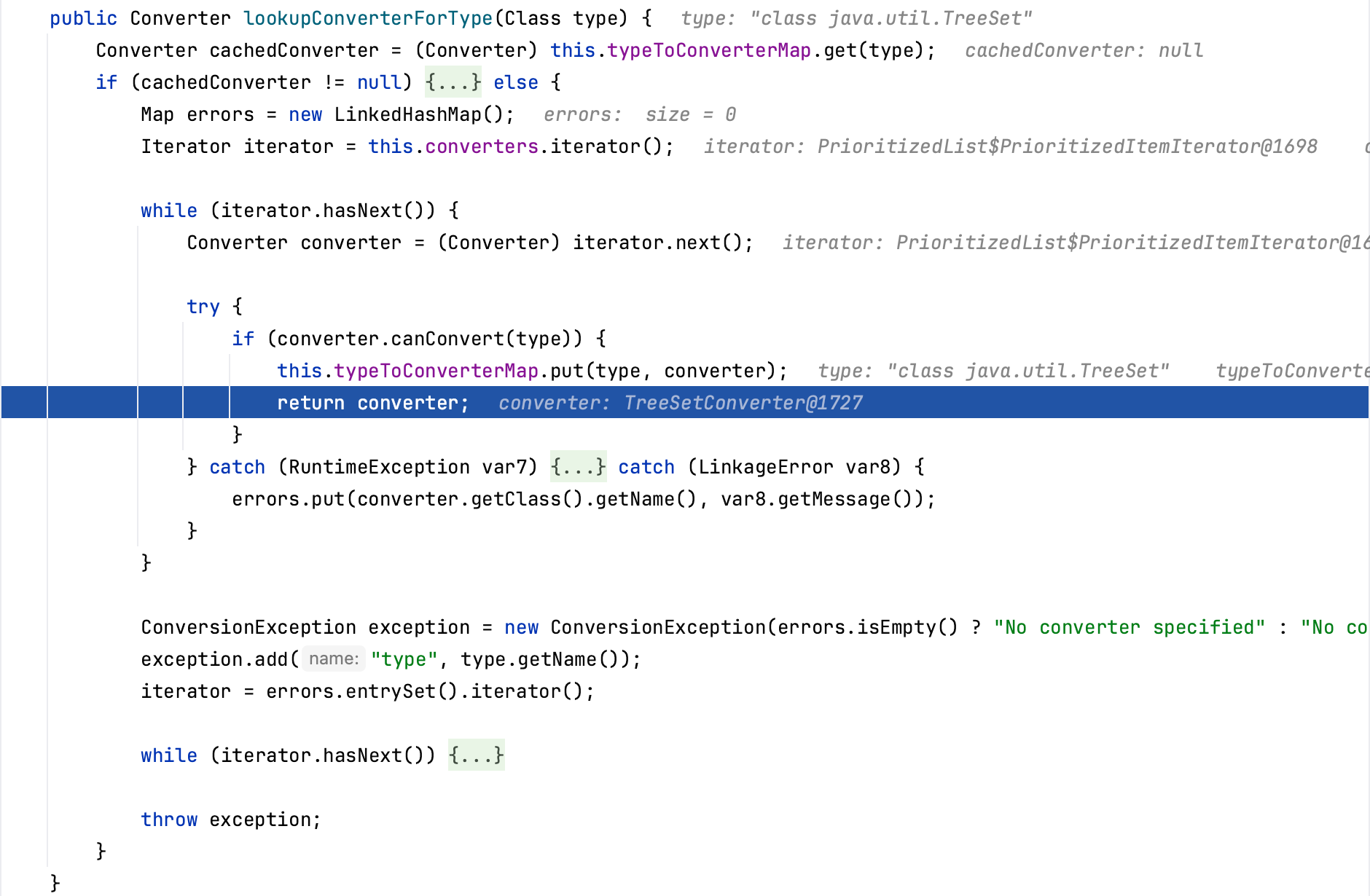
接着回到AbstractReferenceUnmarshaller#convert方法,调用getCurrentReferenceKey方法来获取当前的Reference键,即标签名,并将当前标签名压入parentStack栈中。
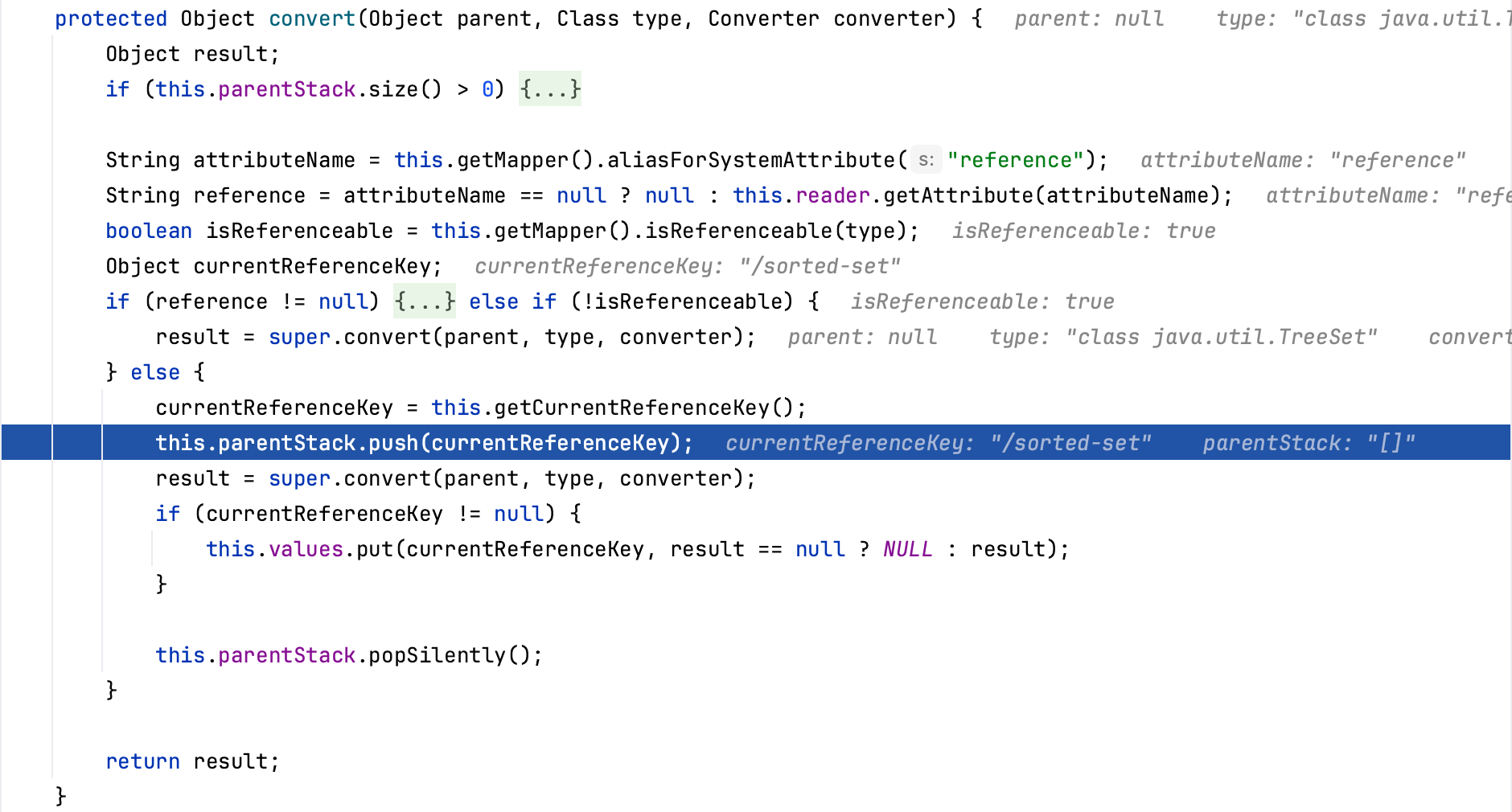
接着调用父类的convert方法,将类型压入栈,然后调用转换器TreeSetConverter的unmarshal方法。

跟进TreeSetConverter#unmarshal方法,这里就回到了上文分析TreeSetConverter时的逻辑了,调用TreeMapConverter#populateTreeMap方法。
跟进TreeMapConverter#populateTreeMap方法,先判断是否是第一个元素,是的话调用putCurrentEntryIntoMap方法,跟进,调用readItem方法读取标签内容,并将当前内容缓存到Map中。
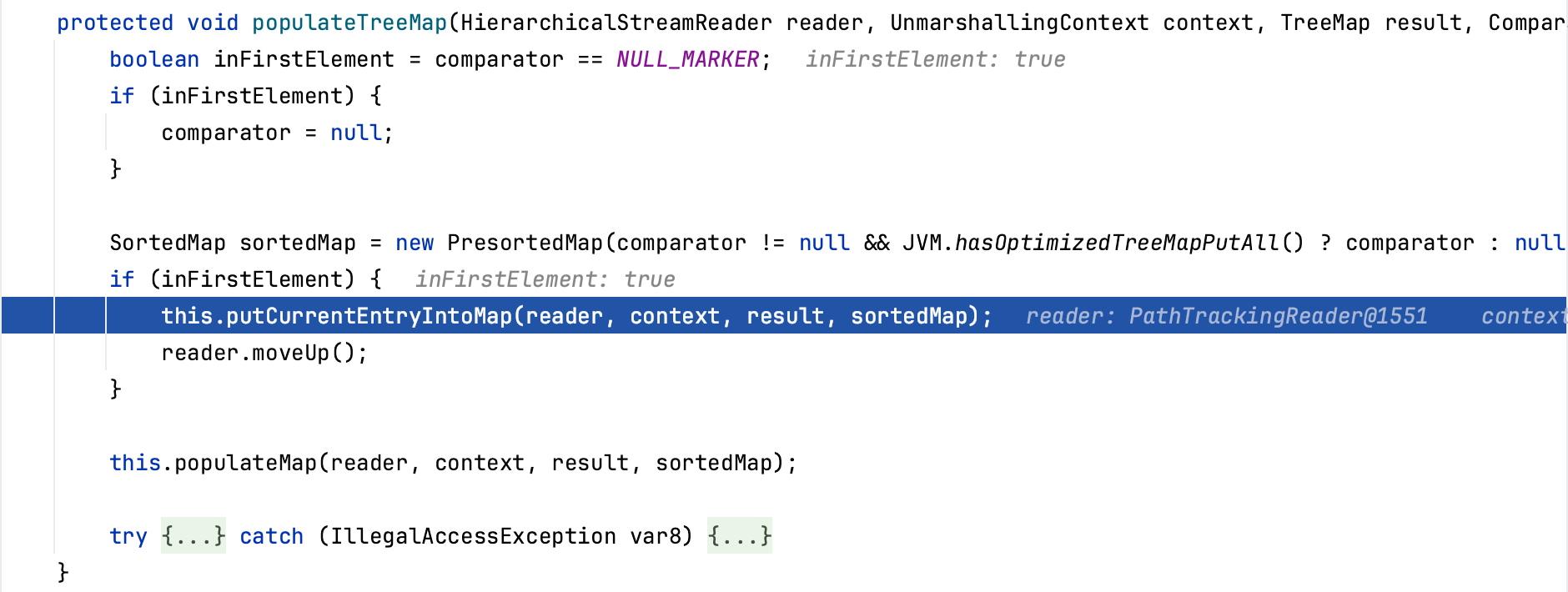

接着调用com.thoughtworks.xstream.io.xml.AbstractDocumentReader#moveUp方法,往下继续读取其他元素,然后调用populateMap方法。
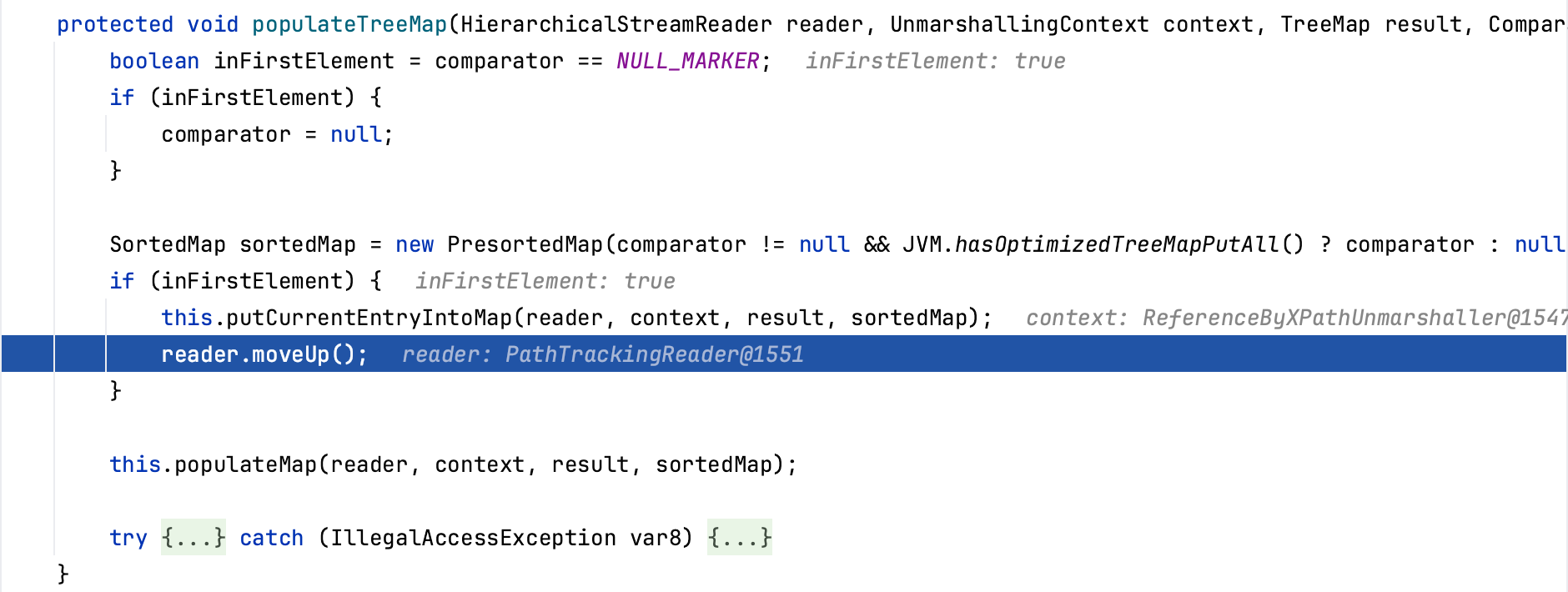
跟进populateMap方法,调用populateCollection方法,用来循环遍历子标签中的元素并添加到集合中,先将动态代理标签添加进集合中,接着调用readItem方法读取标签内容,成功获取到了动态代理类并添加到Map中缓存起来。
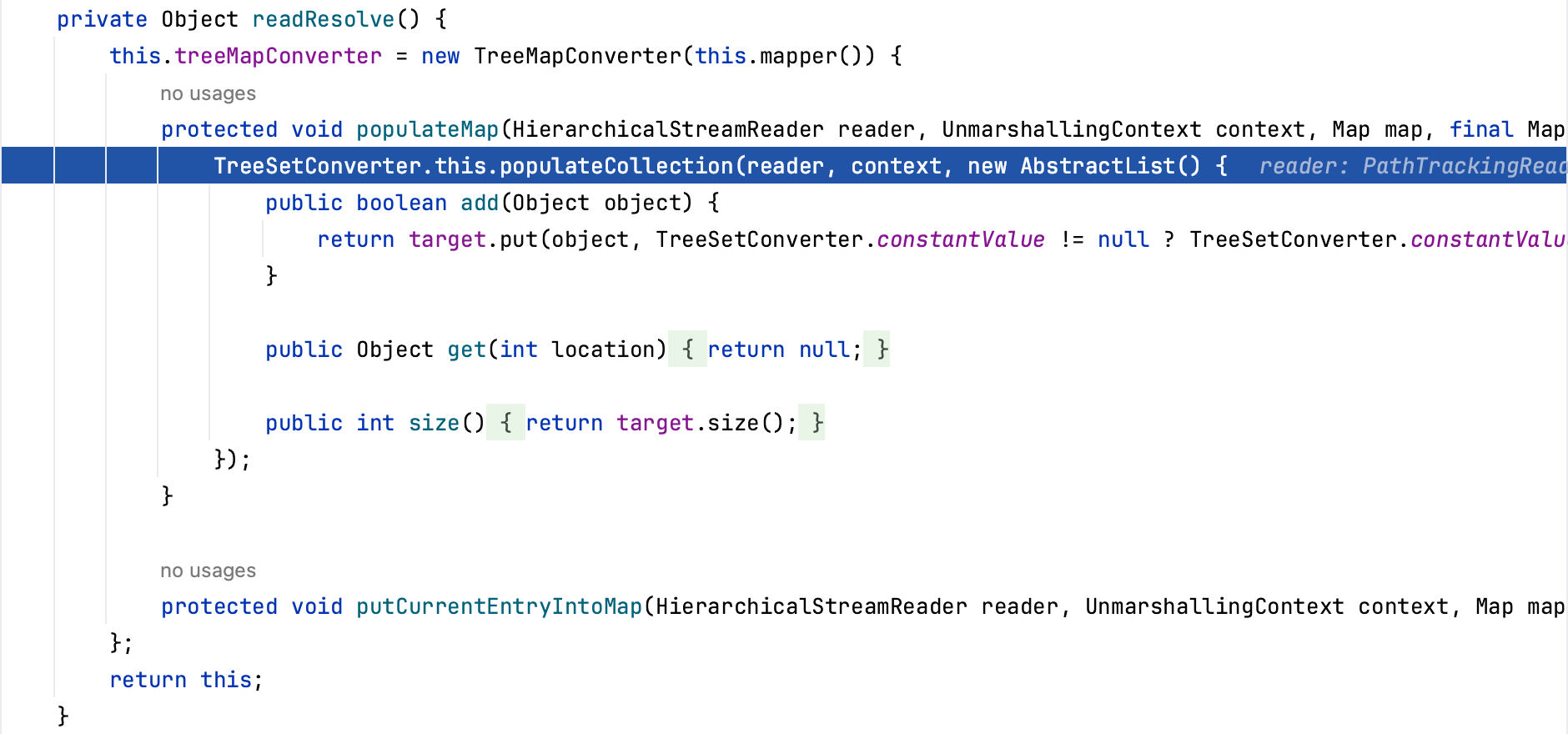

调用完populateMap方法后,会判断JVM是否已充分将TreeMap都缓存起来了,然后调用TreeMap类的putAll方法,可看到参数中包含动态代理类,该代理类指向EventHandler类,而该类正如上文介绍时说的那样通过传入target和action参数值来利用反射机制调用了ProcessBuilder(cmd).start()来执行任意命令。
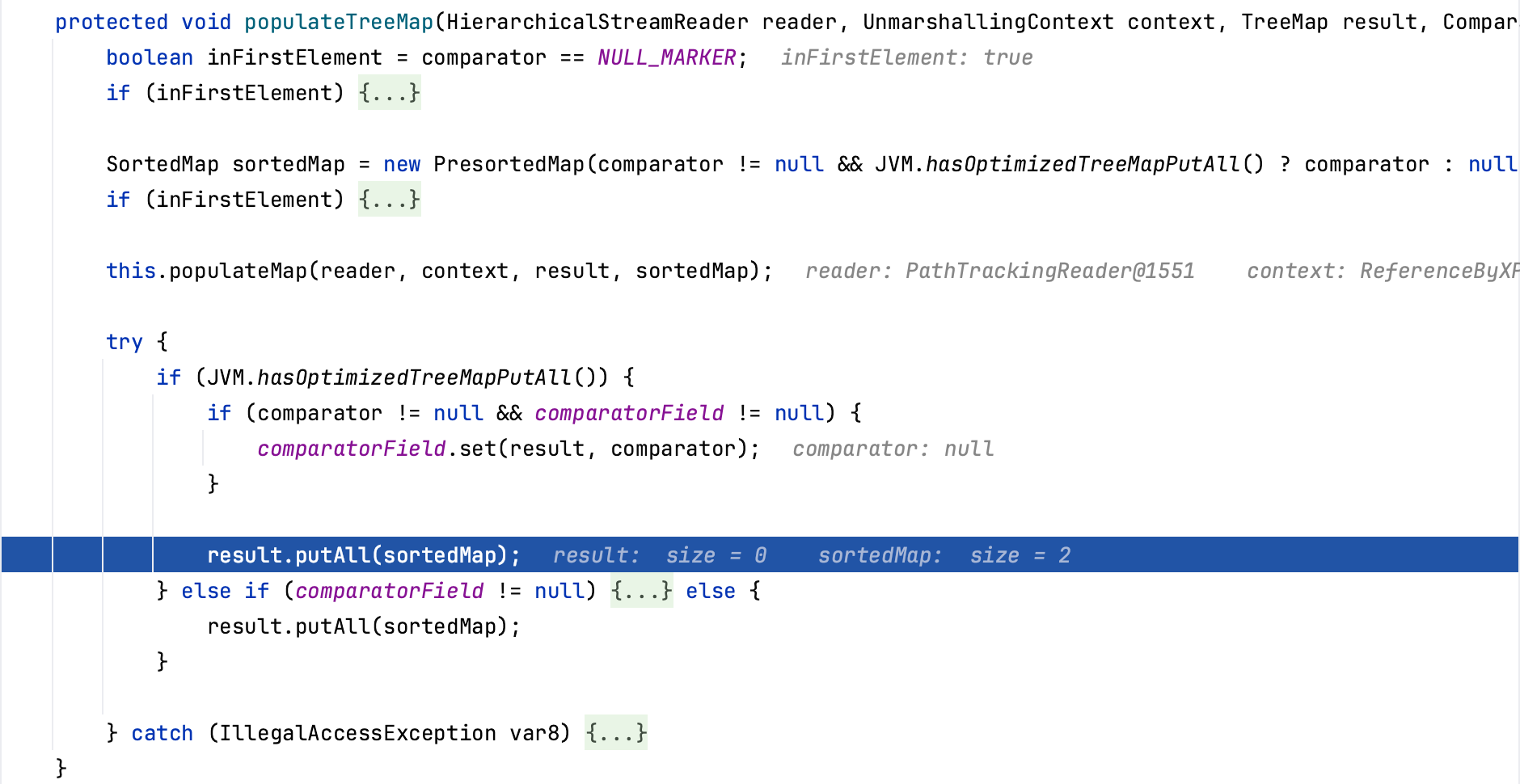
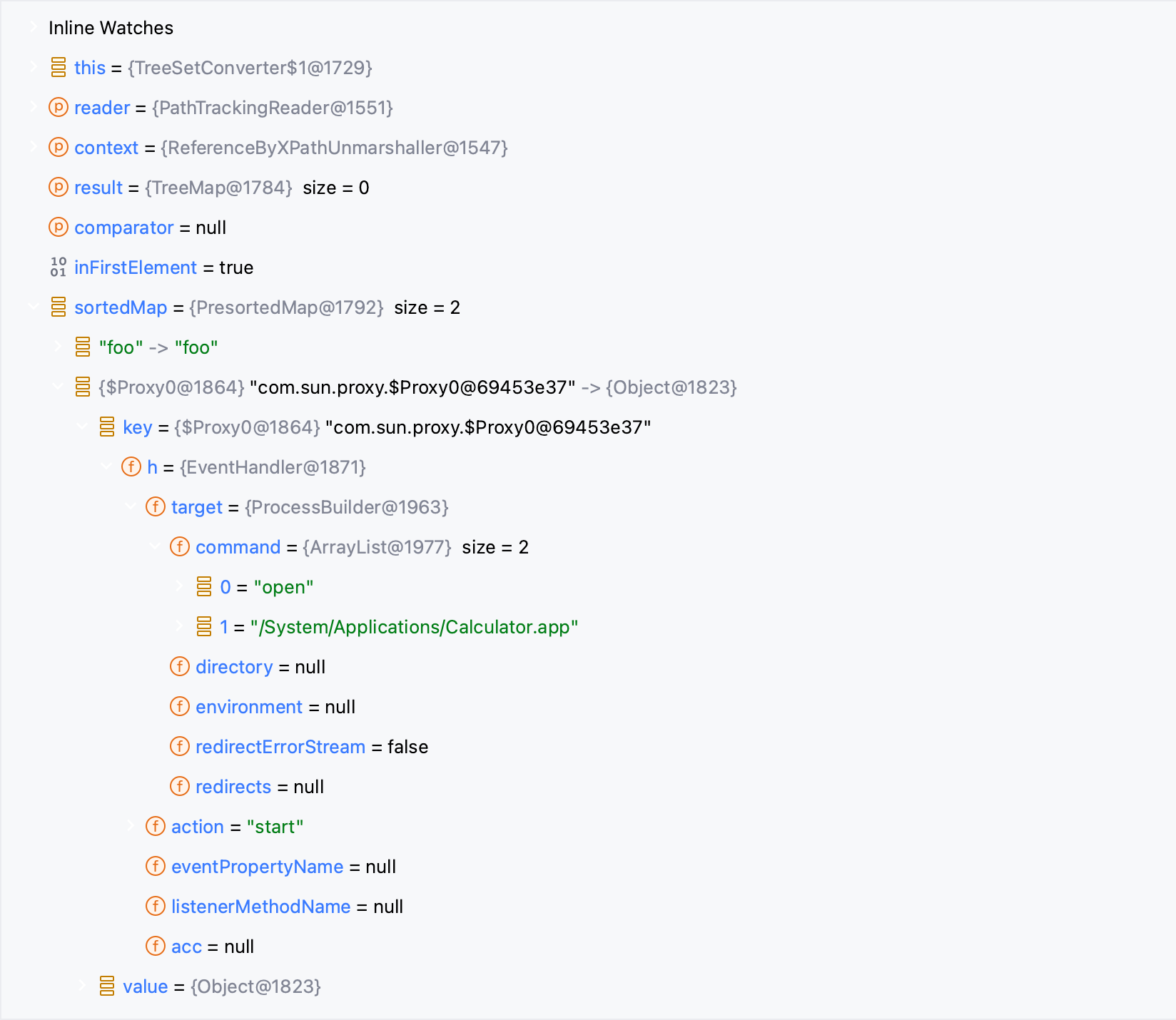
由于动态代理类的机制,接着会调用到EventHandler#invoke方法,通过安全管理器获得权限来执行EventHandler#invokeInternal方法,在EventHandler#invokeInternal方法中,当获取到目标动态代理类对象的实际方法后,就直接通过反射机制调用,实现命令执行。
利用手法
除了上文提到的EventHandler#invokeInternal方法的反射机制调用实现命令执行,还有几种其它的利用姿势实现命令执行。
ConvertedClosure
在Groovy 2.4.3版本之前,MethodClosure方法支持被反序列化调用,可以利用MethodClosure方法封装需要执行的对象,例如new MethodClosure(Runtime.getRuntime(), “exec”);。
ConvertedClosure方法继承了InvocationHandler,会调用父类org.codehaus.groovy.runtime.ConversionHandler的invoke方法,接着再调用ConvertedClosure#invokeCustom方法,此时属性均可控,可以去调用去调用前面构造好的MethodClosure,结合TreeSetConverter实现命令执行。
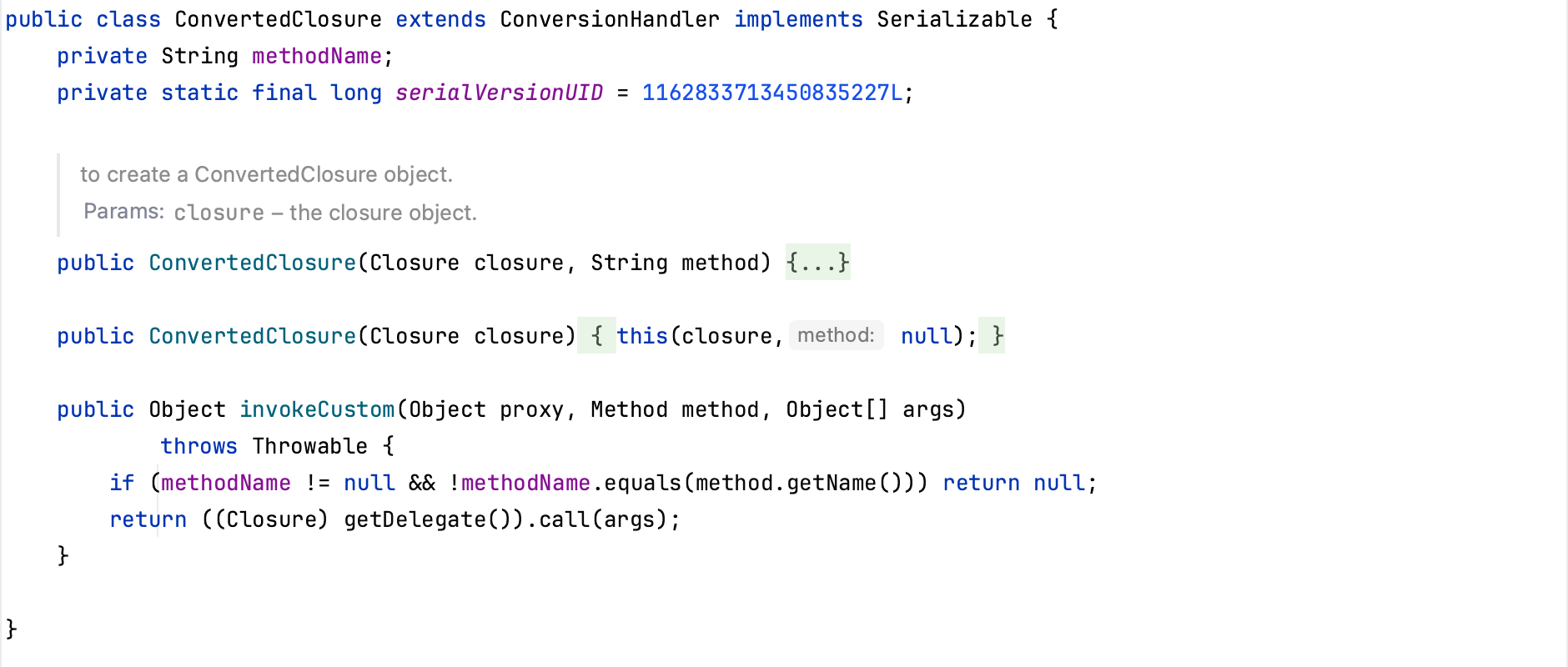
Expando
在groovy.util.Expando#hashCode方法中,如果在类属性expandoProperties中存在hashCode:methodclosure的内容,便可以直接调用MethodClosure的call函数,跟上文ConvertedClosure后续的调用一样,但是这里调用时没有函数参数进来,因此这里的思路可以是ProcessBuilder.start或者fastjson那种getters的利用,结合Map类型触发hashCode实现命令执行。

ImageIO$ContainsFilter
在jdk.nashorn.internal.objects.NativeString#hashCode方法中会调用getStringValue方法,而getStringValue方法中的value类型为CharSequence。因此,接下来要找可以利用的CharSequence的实现类,这里用到的是com.sun.xml.internal.bind.v2.runtime.unmarshaller.Base64Data#toString方法。

跟进com.sun.xml.internal.bind.v2.runtime.unmarshaller.Base64Data#toString方法,先调用get方法,接着会去调用ByteArrayOutputStreamEx#readFrom方法。

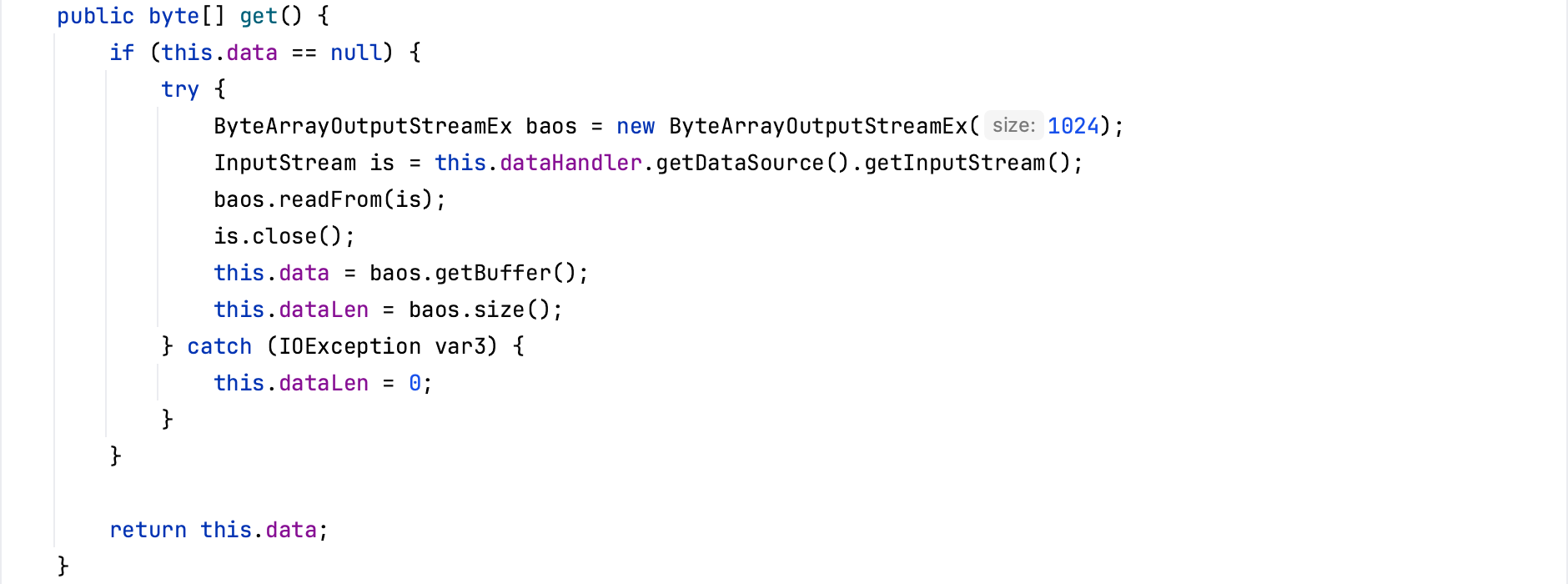
跟进ByteArrayOutputStreamEx#readFrom方法,这里的is是可控的,因为这里调用的this.dataHandler.getDataSource().getInputStream(),他的值传递都可以用类属性的方式把他构建出来。
1 | 1. this.dataHandler == 构造好的DataHandler |
用这种方法就可以获取一个可控的inputStream,并且后续会继续调用javax.crypto.CipherInputStream#read方法,跟进javax.crypto.CipherInputStream#read方法,调用getMoreData方法,此时需要构造一个Cipher类型,并且后续调用Cipher.update方法,这里可以用javax.crypto.NullCipher来填充,因为最终用到的是父类Cipher.update,只要不重载update,其他的子类也可以。

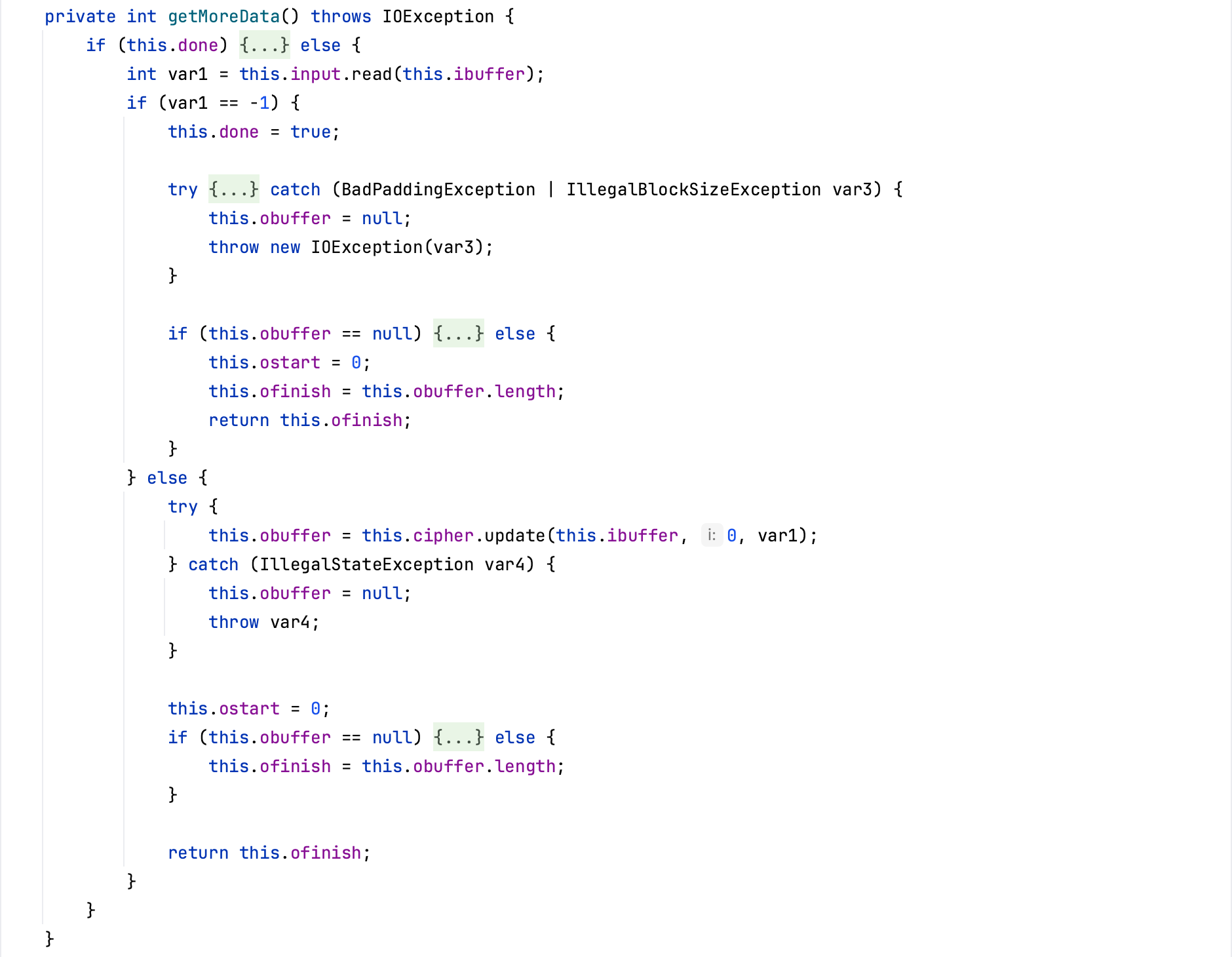
跟进Cipher#update方法,最终调用到serviceIterator#next方法。

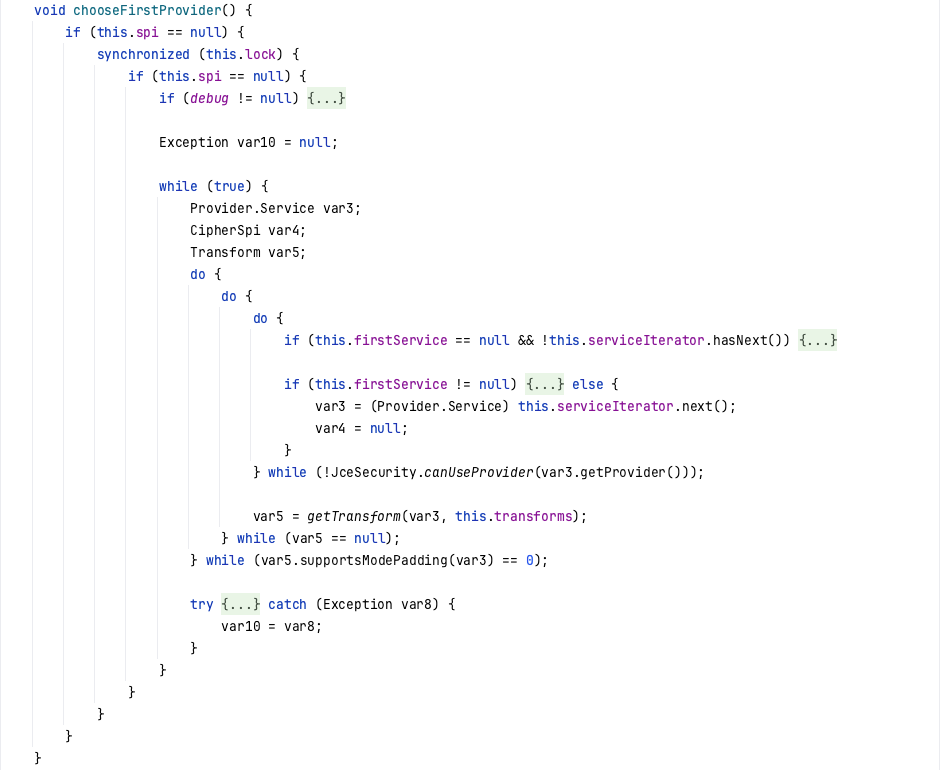
跟进javax.imageio.spi.FilterIterator#next方法,调用advance方法。
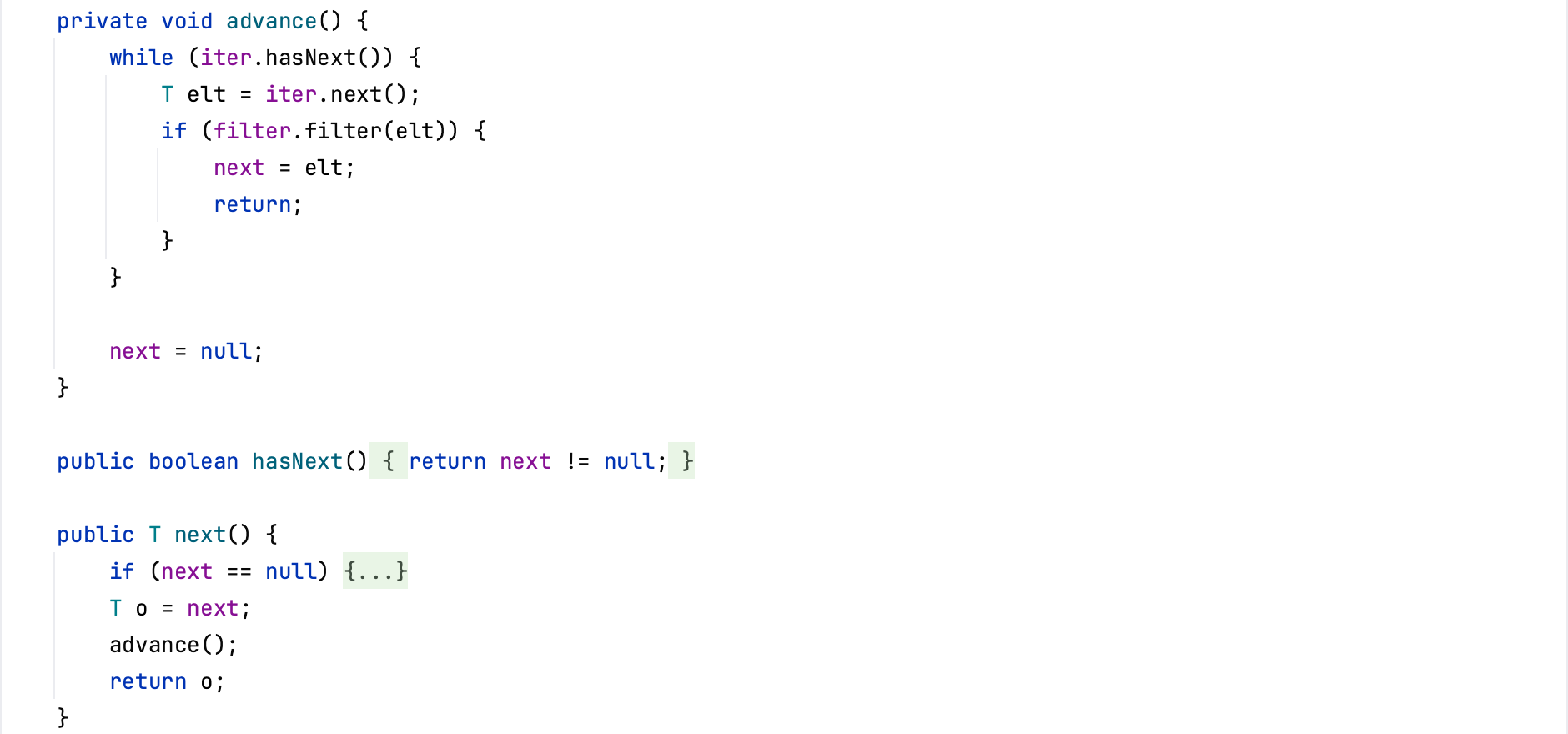
跟进advance方法,ImageIO存在一个有趣的filter,javax.imageio.ImageIO.ContainsFilter#filter,这里调用该filter方法,跟进发现可以指定一个Method对象去invoke,利用Java反射机制了,提前构造好method对象,就可以调用任意的函数。
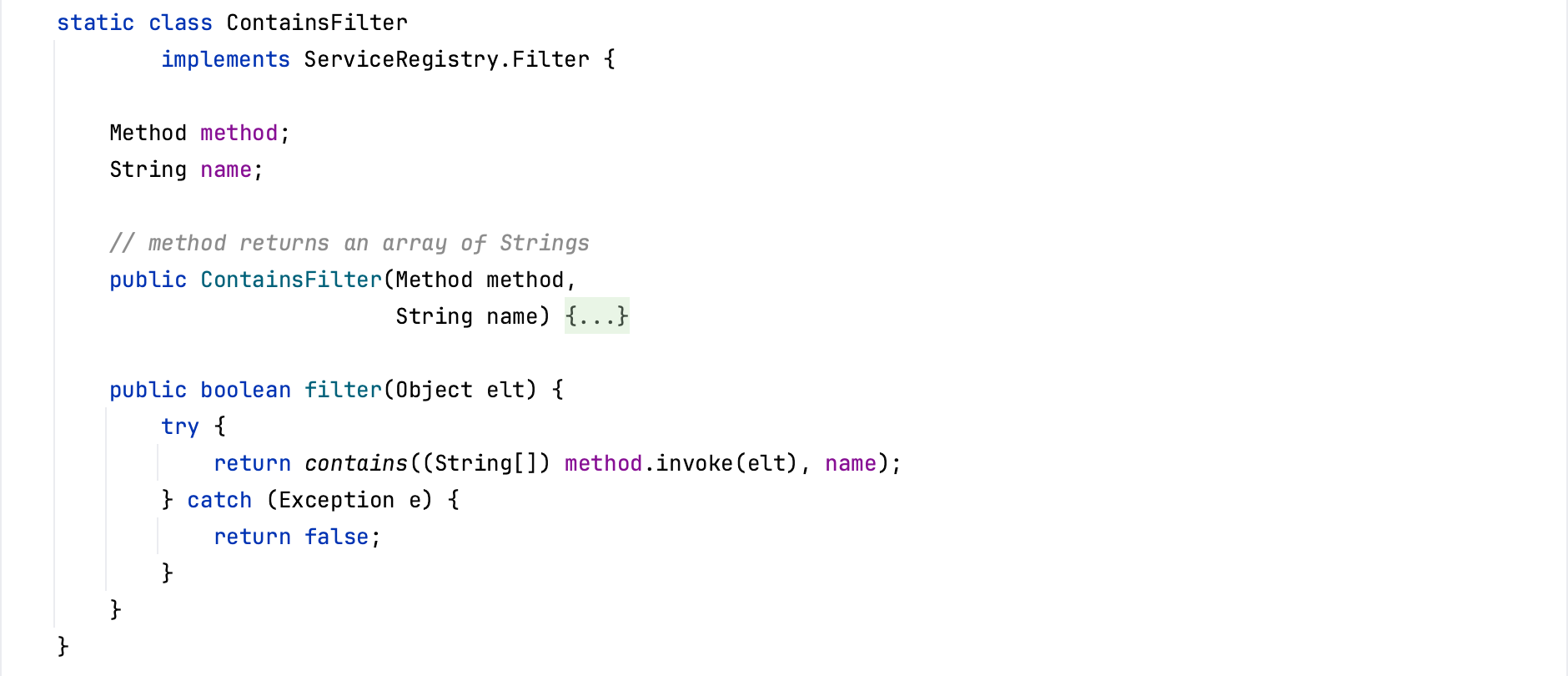
ServiceFinder$LazyIterator
在上文ImageIO$ContainsFilter的构造方式的核心是在于可以去触发Iterator.next,因此寻找其它触发Iterator.next的方式也可以实现命令执行的目的,这里选择java.util.ServiceLoader.LazyIterator#next方法。

当类属性acc为空时,会去调用nextService函数,而在该函数里面,存在Class.forName的调用,并且去实例化的classname、loader,都是类属性,属于可以控制的东西,到了这里自然而然的就想到了使用BCEL的ClassLoader来载入classname里的字节码。
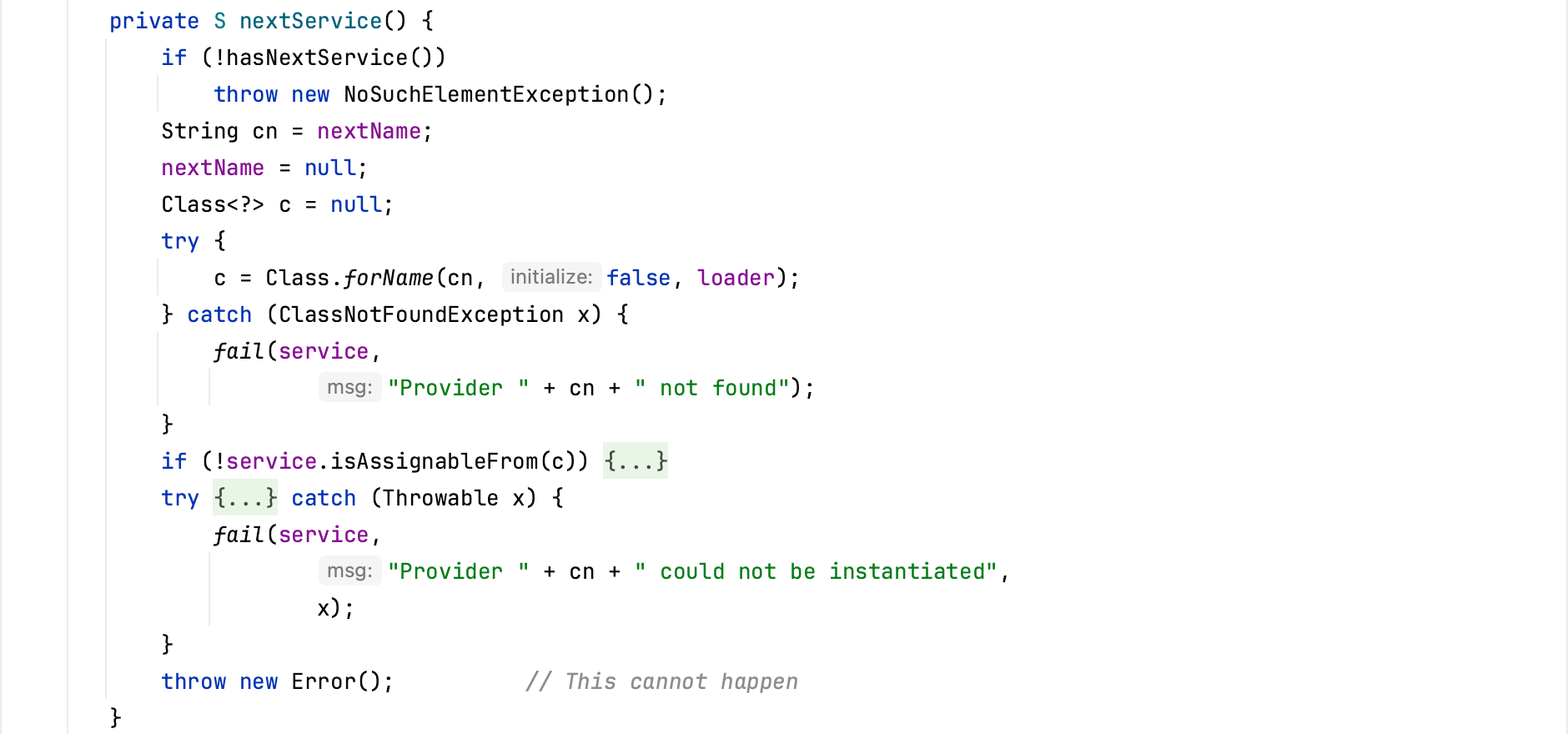
EXP
XStream的POC在官方的安全通告中都给出来了,https://x-stream.github.io/security.html。